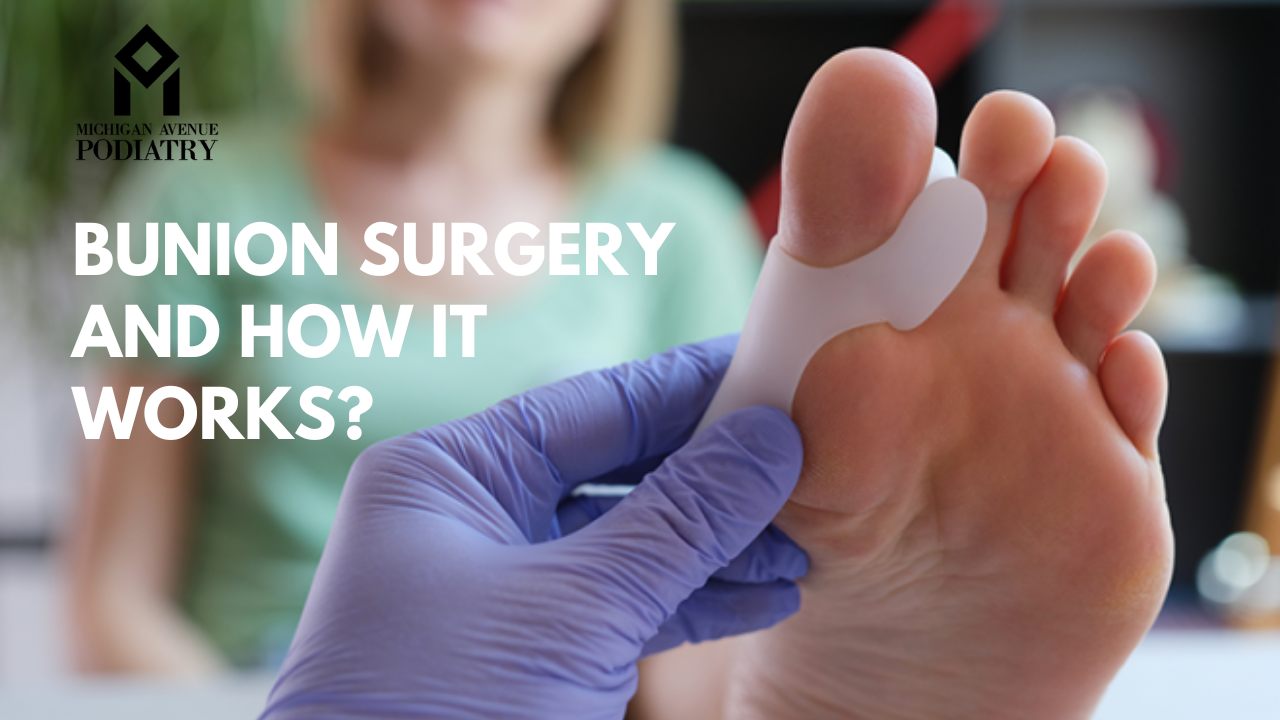Bunions, medically known as hallux valgus, are a common foot deformity characterized by a bony bump that forms at the base of the big toe. While conservative measures such as orthotics and proper footwear can help alleviate symptoms, severe cases may require surgical intervention to correct the underlying structural issues. In this informative blog post, we’ll explore how bunion surgery works, from pre-operative preparation to post-operative recovery, empowering you to make informed decisions about your foot health.
Understanding Bunions and When Surgery is Needed
Before delving into the details of bunion surgery, it’s important to understand the nature of bunions and the factors that may necessitate surgical treatment. Bunions develop when the joint at the base of the big toe becomes misaligned, causing the big toe to drift towards the second toe and the formation of a bony prominence on the side of the foot. Bunions can be caused by various factors, including genetics, improper footwear, foot mechanics, and underlying structural abnormalities. While conservative measures such as padding, shoe modifications, and anti-inflammatory medications can provide symptomatic relief, bunion surgery may be recommended for individuals experiencing severe pain, deformity, or functional limitations that impact their quality of life.
The Role of Podiatrists and Foot Doctors in Bunion Surgery
Podiatrists and foot doctors, also known as podiatric surgeons, play a crucial role in the evaluation, diagnosis, and management of bunions, including surgical intervention when necessary. These specialists have extensive training and expertise in treating foot and ankle conditions, making them well-equipped to address the complexities of bunion surgery. Podiatric surgeons work closely with patients to assess their individual needs, develop personalized treatment plans, and guide them through every step of the surgical process, from pre-operative preparation to post-operative care and rehabilitation.
How Bunion Surgery Works
Bunion surgery, also referred to as bunionectomy, aims to realign the misaligned joint, remove the bony prominence, and restore normal foot function and alignment. There are several surgical techniques and approaches used in bunion surgery, depending on the severity of the bunion and the patient’s specific needs. Common types of bunion surgery include:
- Osteotomy: In this procedure, the surgeon makes precise cuts in the bone to realign the joint and correct the deformity. The bone may be repositioned and secured with screws, plates, or wires to maintain stability during the healing process.
- Exostectomy: This technique involves removing the bony prominence on the side of the foot without realigning the joint. Exostectomy may be performed as a standalone procedure or in conjunction with other surgical methods.
- Arthrodesis: In cases of severe bunion deformity or arthritis, arthrodesis may be recommended to fuse the affected joint. This procedure stabilizes the joint and eliminates pain by preventing movement between the bones.
- Soft Tissue Procedures: Surgical techniques that involve tightening or releasing the soft tissues surrounding the joint may be employed to address muscle imbalances, correct toe alignment, and improve overall foot function.
Recovery and Rehabilitation
Following bunion surgery, patients can expect a period of recovery and rehabilitation to promote healing and restore normal foot function. Depending on the type of surgery performed, recovery times may vary, ranging from a few weeks to several months. During the recovery period, patients are advised to keep weight off the operated foot, elevate the foot to reduce swelling, and follow their surgeon’s instructions for wound care and activity modification. Physical therapy and exercises may be prescribed to improve strength, flexibility, and range of motion in the foot and ankle.
Conclusion
Bunion surgery is a highly effective treatment option for individuals suffering from severe bunions that do not respond to conservative measures. By understanding how bunion surgery works and the role of podiatrists and foot doctors in the surgical process, patients can make informed decisions about their foot health and choose the best course of treatment for their individual needs. If you’re experiencing persistent bunion pain or deformity, don’t hesitate to consult with a podiatric surgeon to explore your options for bunion surgery and take the first step towards achieving pain-free, functional feet.
To schedule an appointment with our board-certified foot and ankle specialists, Book Your Appointment Now




